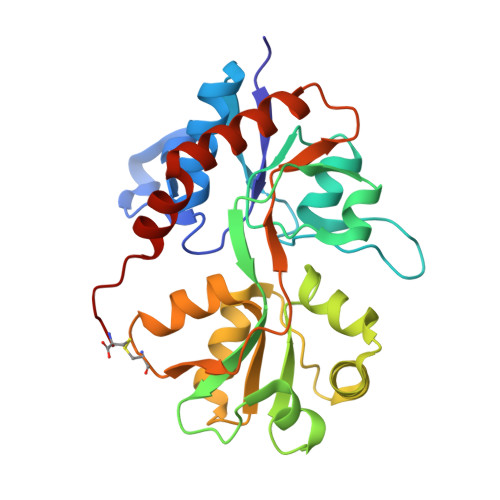Measurement of Conformational Changes accompanying Desensitization in an Ionotropic Glutamate Receptor.
Armstrong, N., Jasti, J., Beich-Frandsen, M., Gouaux, E.(2006) Cell 127: 85-97
- PubMed: 17018279
- DOI: https://doi.org/10.1016/j.cell.2006.08.037
- Primary Citation of Related Structures:
2I3V, 2I3W - PubMed Abstract:
The canonical conformational states occupied by most ligand-gated ion channels, and many cell-surface receptors, are the resting, activated, and desensitized states. While the resting and activated states of multiple receptors are well characterized, elaboration of the structural properties of the desensitized state, a state that is by definition inactive, has proven difficult. Here we use electrical, chemical, and crystallographic experiments on the AMPA-sensitive GluR2 receptor, defining the conformational rearrangements of the agonist binding cores that occur upon desensitization of this ligand-gated ion channel. These studies demonstrate that desensitization involves the rupture of an extensive interface between domain 1 of 2-fold related glutamate-binding core subunits, compensating for the ca. 21 degrees of domain closure induced by glutamate binding. The rupture of the domain 1 interface allows the ion channel to close and thereby provides a simple explanation to the long-standing question of how agonist binding is decoupled from ion channel gating upon receptor desensitization.
- Department of Biochemistry and Molecular Biophysics, Columbia University, 650 West 168th Street, New York, NY 10032 USA.
Organizational Affiliation:


















